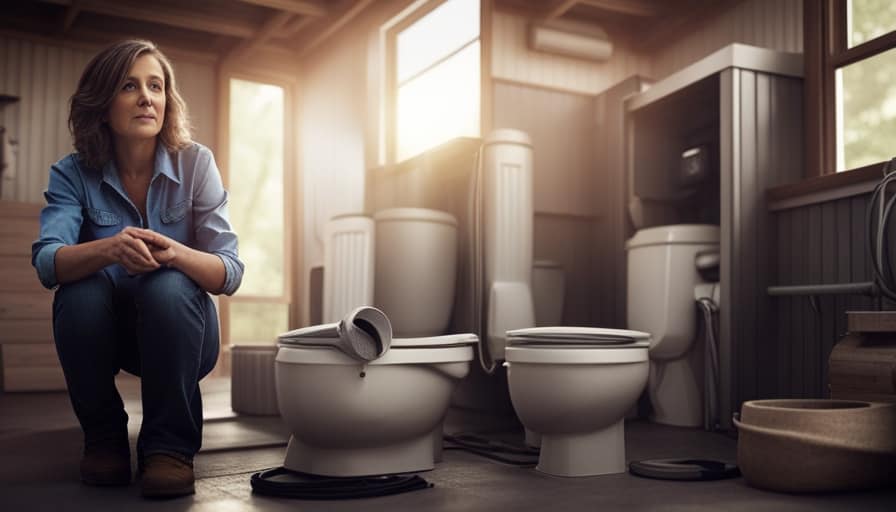Serendipity frequently leads to unexpected outcomes, as seen in Tim Smith’s latest DIY project. Upon realizing that the teardrop trailer he built was too small for a comfortable rest, Tim came across designs on the Big Woody Campers website. This discovery inspired him to build the Vardo, a cozy and cost-effective trailer that now functions as extra sleeping quarters at his cabin in Wisconsin, as well as a play area for his grandchildren.
Inspired by the efficient floor plan of a sheepherder’s wagon, Tim’s Vardo features a bed layout, table, and seating area, making it a versatile and practical addition to any outdoor adventure.
Despite its humble beginnings, Tim’s Vardo has proven to be a road-worthy and fun project that is relatively easy to build. With a construction time of just 2 1/2 months and a total cost of around $4000, the Vardo is an affordable option for those looking to add a bit of comfort and convenience to their outdoor excursions.
In this article, we will delve into the project details, usage and performance, as well as cost and resources required to build Tim’s DIY Vardo. Whether you are a seasoned DIY enthusiast or a novice looking to embark on your first project, Tim’s Vardo is sure to inspire and inform.
Key Takeaways
- Tim built a Vardo trailer inspired by a sheepherder’s wagon for around $4000 in roughly 2 1/2 months.
- The Vardo is versatile and practical, featuring a bed layout, table, and seating area, but may not be suitable for couples or individuals who require more space.
- Tim utilized many DIY tips and tricks, such as designing his own layout and sourcing materials from local suppliers, which allowed him to save money while still achieving a high-quality build.
- Building your own cozy and cost-effective Vardo can be a fun and rewarding project, but it is important to do your research and plan carefully.
Project Details
The Vardo project, completed by Tim Smith, was inspired by his previous teardrop trailer build from the plans of Big Woody Campers website. However, the teardrop was too narrow for two people to sleep comfortably, leading Tim to modify the plans and build a Vardo instead.
The Vardo has a bed layout, table, seating area, and hardtop camper with a similar floor plan to a sheepherders wagon. Tim found several great websites and YouTubers for ideas and started building late last winter. The entire project took roughly 2 1/2 months to build for around $4000 and is now used as an extra bedroom at their cabin in Wisconsin and a playhouse for their grandchildren.
The building process was relatively easy and enjoyable for Tim. While the Vardo is road-worthy, it is not particularly aerodynamic and is better suited for stationary use or short trips. Tim’s design inspiration came from his experience staying in an 1890s sheepherders wagon, which he found to have an efficient floor plan.
The Vardo project is detailed on Tim’s Projects website, and there is a photo of the front of the Vardo out camping. Overall, the Vardo is a cozy, cost-effective, and fun DIY project that can serve a variety of purposes.
Usage and Performance
Suitable for short trips and stationary use, the Vardo’s road-worthiness has been tested at 60 mph on the highway, although its aerodynamics may not be optimal for longer travel.
The Vardo’s efficient floor plan, inspired by an 1890s sheepherders wagon, ensures that the space is used effectively, although it may come at the expense of comfort.
The bed layout and construction, as well as the table and seating area, make the Vardo suitable for a variety of uses, such as an extra bedroom at a cabin or a playhouse for grandchildren.
However, the Vardo’s narrow design may not be suitable for couples or individuals who require more space. Additionally, changing clothes while lying down may not be the most comfortable experience.
Thus, the Vardo may be better suited for shorter trips or stationary use, where its efficiency and cost-effectiveness can be fully utilized.
Overall, the Vardo is a fun and practical DIY project that can be customized to suit individual needs and preferences.
Cost and Resources
Considering the financial investment required for the project, it is noteworthy that the Vardo was built for around $4000, which is relatively low compared to other similar projects. To give a better idea of the budget breakdown, here is a list of the approximate costs of the main components:
- Trailer frame: $800
- Lumber and insulation: $1200
- Windows and doors: $800
- Electrical and plumbing: $1200
It is important to note that Tim was able to repurpose some materials, such as the flooring and the roof, which helped to keep costs down. Additionally, he utilized many DIY tips and tricks, such as designing his own layout and sourcing materials from local suppliers, which allowed him to save money while still achieving a high-quality build.
If you are considering building your own Vardo or similar project, it is important to do your research and plan carefully. By utilizing DIY tips and tricks, sourcing materials from local suppliers, and repurposing materials when possible, you can save money while still achieving a high-quality build. With a bit of creativity and resourcefulness, building your own cozy and cost-effective Vardo can be a fun and rewarding project.
Frequently Asked Questions
What inspired Tim to build a Vardo?
The inspiration behind Tim’s Vardo project is not explicitly stated, but it can be inferred that his experience building a teardrop trailer and staying in a sheepherders wagon played a role in this decision. Tim modified plans from the Big Woody Campers website and researched various websites and YouTubers for ideas before starting the construction process.
The Vardo took approximately 2 1/2 months to build and cost around $4000. Tim enjoyed the building process and uses the Vardo as an extra bedroom at his cabin in Wisconsin and as a playhouse for his grandchildren. The Vardo features a bed layout and construction, a table and seating area, and has a hardtop camper with a similar floor plan to a sheepherders wagon.
Tim tested the Vardo on the highway and found it to be road-worthy but not particularly aerodynamic, making it more suitable for stationary use or short trips. Overall, Tim’s building process and techniques demonstrate a practical and cost-effective approach to creating a functional and cozy living space.
What materials did Tim use to build the Vardo?
To answer the current question, Tim used recycled materials and budget friendly options to build his Vardo. Although the exact materials he used are not specified, it is mentioned that the project cost around $4000.
With this budget in mind, it’s likely that Tim opted for cost-effective options such as salvaged wood, repurposed furniture, and thrifted decor. Additionally, it’s possible that he utilized recycled materials in order to make the Vardo more eco-friendly.
While the specifics of the materials used are not given, it is clear that Tim was able to build a functional and cozy Vardo without breaking the bank.
How long did it take Tim to learn the skills needed to build a Vardo?
Learning how to build a Vardo involves a steep learning curve and a significant amount of time. The timeframe varies depending on the individual’s experience with DIY projects, construction skills, and the availability of resources. Building a Vardo requires a combination of woodworking, metalworking, electrical, and plumbing skills. Thus, it may take several months or even years to master all the necessary skills.
Additionally, the Vardo’s design and construction require careful planning, research, and attention to detail. The builder must consider the Vardo’s intended use, size, weight, and materials, among other factors. Therefore, it is essential to invest time and effort in learning the skills needed to build a Vardo.
Can the Vardo be customized to fit specific needs or preferences?
Customization options are a crucial consideration when building a Vardo, as personal preferences can vary greatly from one individual to another. There are several ways to customize a Vardo to fit specific needs and preferences, including the layout and construction of the bed, table, and seating area.
The use of different materials, colors, and finishes can also help to create a unique and personalized look. Additionally, the Vardo can be designed to accommodate different types of appliances, such as a stove, refrigerator, or even a portable toilet.
By taking the time to consider customization options, individuals can create a Vardo that is not only functional but also reflective of their personal style and preferences.
How has the Vardo improved Tim’s camping experience compared to traditional tents or RVs?
Camping with a Vardo offers several benefits over traditional camping options, including increased comfort and freedom.
Compared to tents or RVs, the Vardo provides a more personalized and unique camping experience, allowing for customization of the layout and design.
The Vardo’s construction and layout provide a cozy and comfortable sleeping area and seating area for relaxing and dining.
However, the Vardo is not as aerodynamic as other camping options, making it better suited for stationary use or shorter trips.
Overall, the Vardo offers a cost-effective and fun way to camp with increased freedom and comfort compared to traditional camping options.
I’m Theodore, and I love tiny houses. In fact, I’m the author of Tiny House 43, a book about tiny houses that are also tree houses. I think they’re magical places where imaginations can run wild and adventures are just waiting to happen.
While tree houses are often associated with childhood, they can be the perfect adult retreat. They offer a cozy space to relax and unwind, surrounded by nature. And since they’re typically built on stilts or raised platforms, they offer stunning views that traditional homes simply can’t match.
If you’re looking for a unique and romantic getaway, a tree house tiny house might just be the perfect option.










